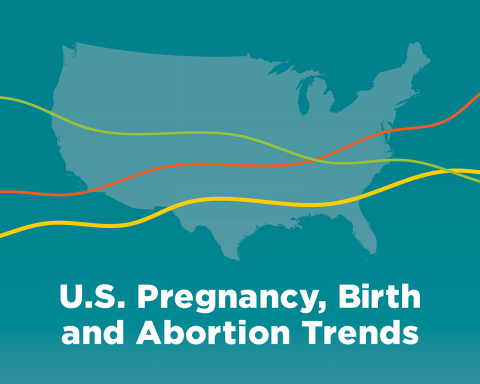This publication has been updated, please see here for the latest version.
The Guttmacher Institute calculates comprehensive historical statistics on the incidence of pregnancy, birth and abortion for people of reproductive age in the United States (see Definitions). Our most recent release includes national statistics covering the period from 1973 to 2016, the most recent year for which comparable data are available; state-level statistics are available for selected years from 1988 to 2016 (see Note). We highlight a few patterns in these new demographic estimates and include a series of interactive figures for further data exploration. An accompanying appendix discusses the methodology and sources used.
Introduction
Documenting pregnancy, birth and abortion rates over time and by age-group helps illustrate broadly how people’s reproductive lives have changed over the past four decades. Guttmacher’s prior national- and state-level statistical reports have focused exclusively on individuals aged 24 or younger.1–8 In this report, we present data across all reproductive age-groups, as we believe that trends in pregnancy rates among younger people are better understood within this larger context.*
A few notable trends are highlighted below. The complete data set of all estimates (along with accompanying documentation) is publicly available at https://osf.io/kthnf in a variety of formats. Select estimates are also incorporated into the Guttmacher Institute’s Data Center, where users can generate interactive visualizations and custom tables.
Highlights
The following interactive figures offer a selection of key measures that portray trends over time nationally and by state, as well as regionally. We describe notable patterns discoverable in each figure. Use the drop-down menu boxes in figure titles to change which data are displayed.

